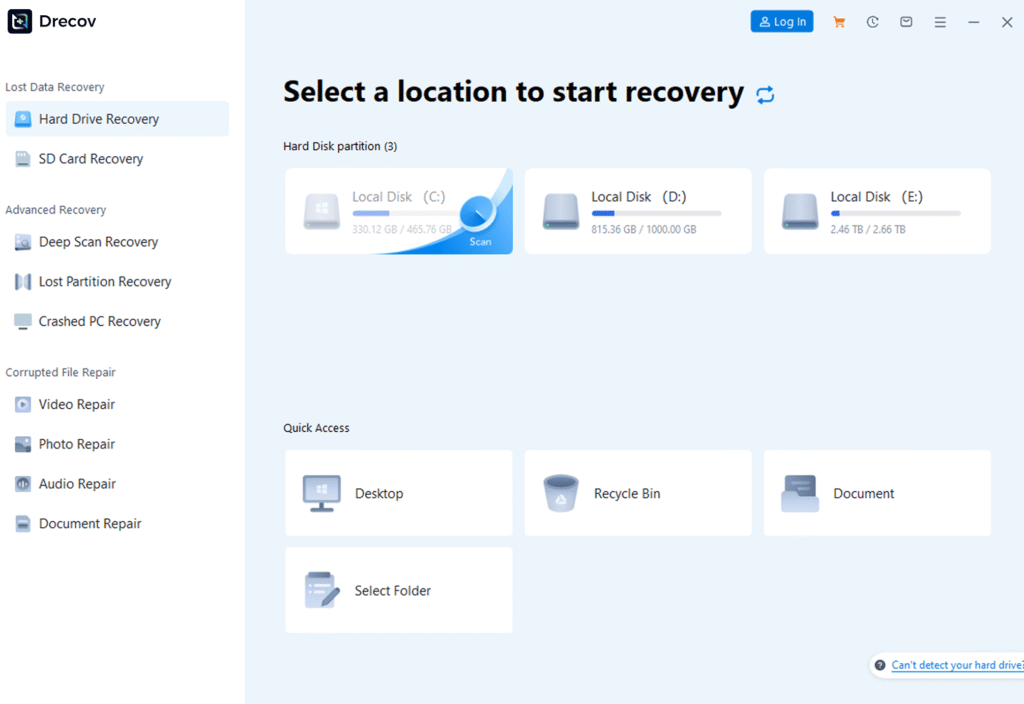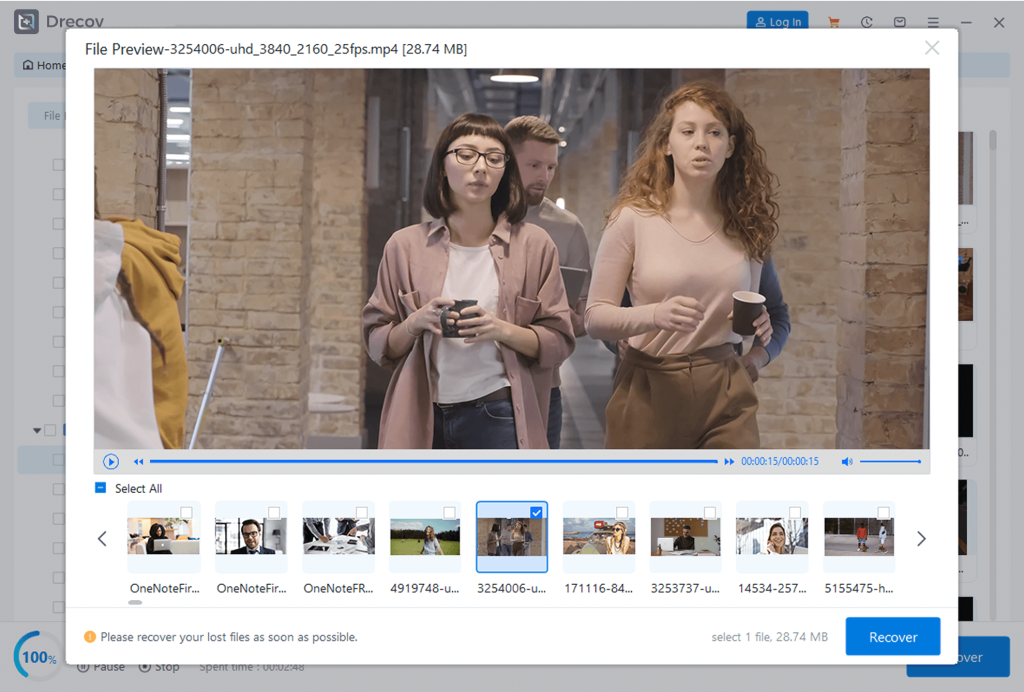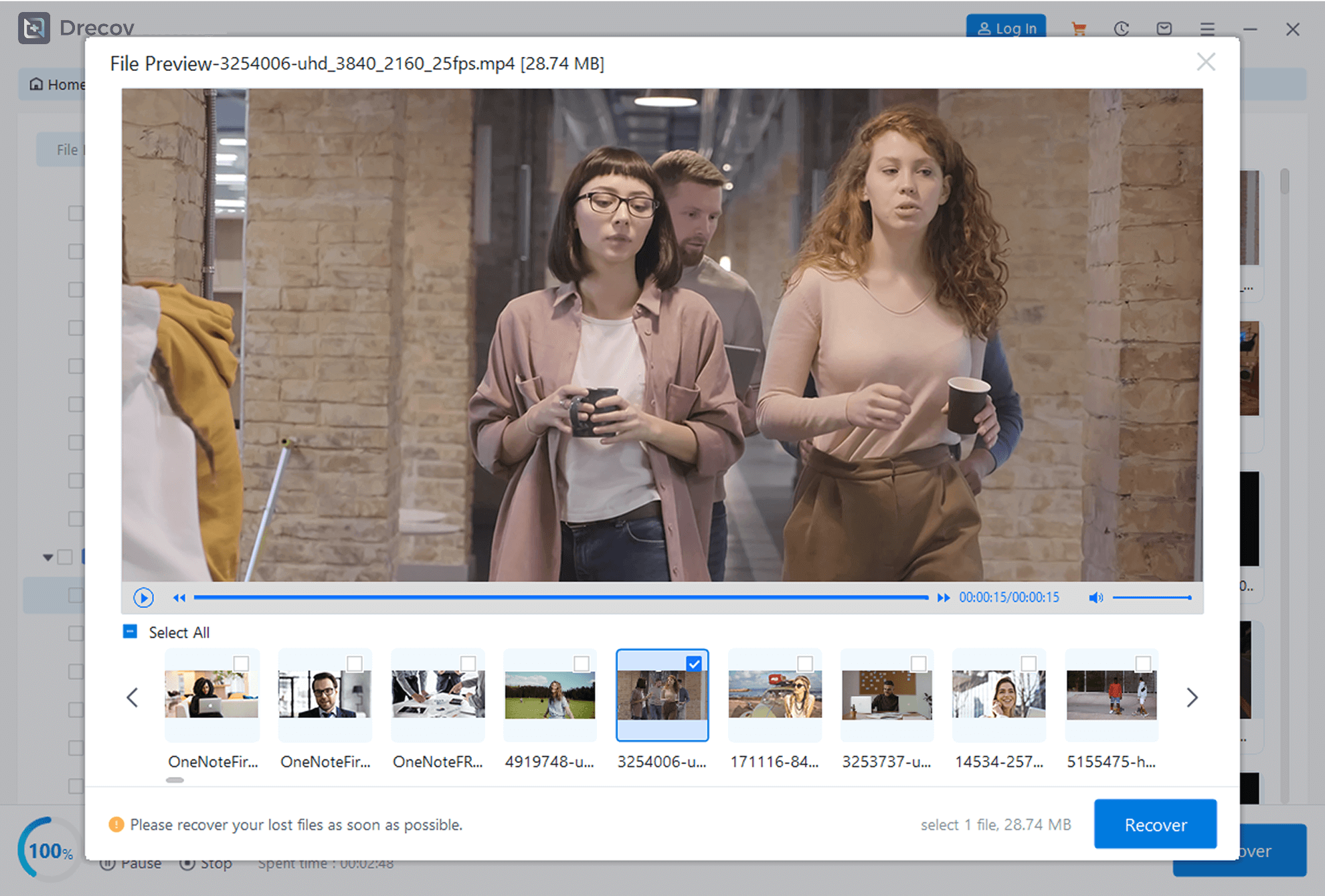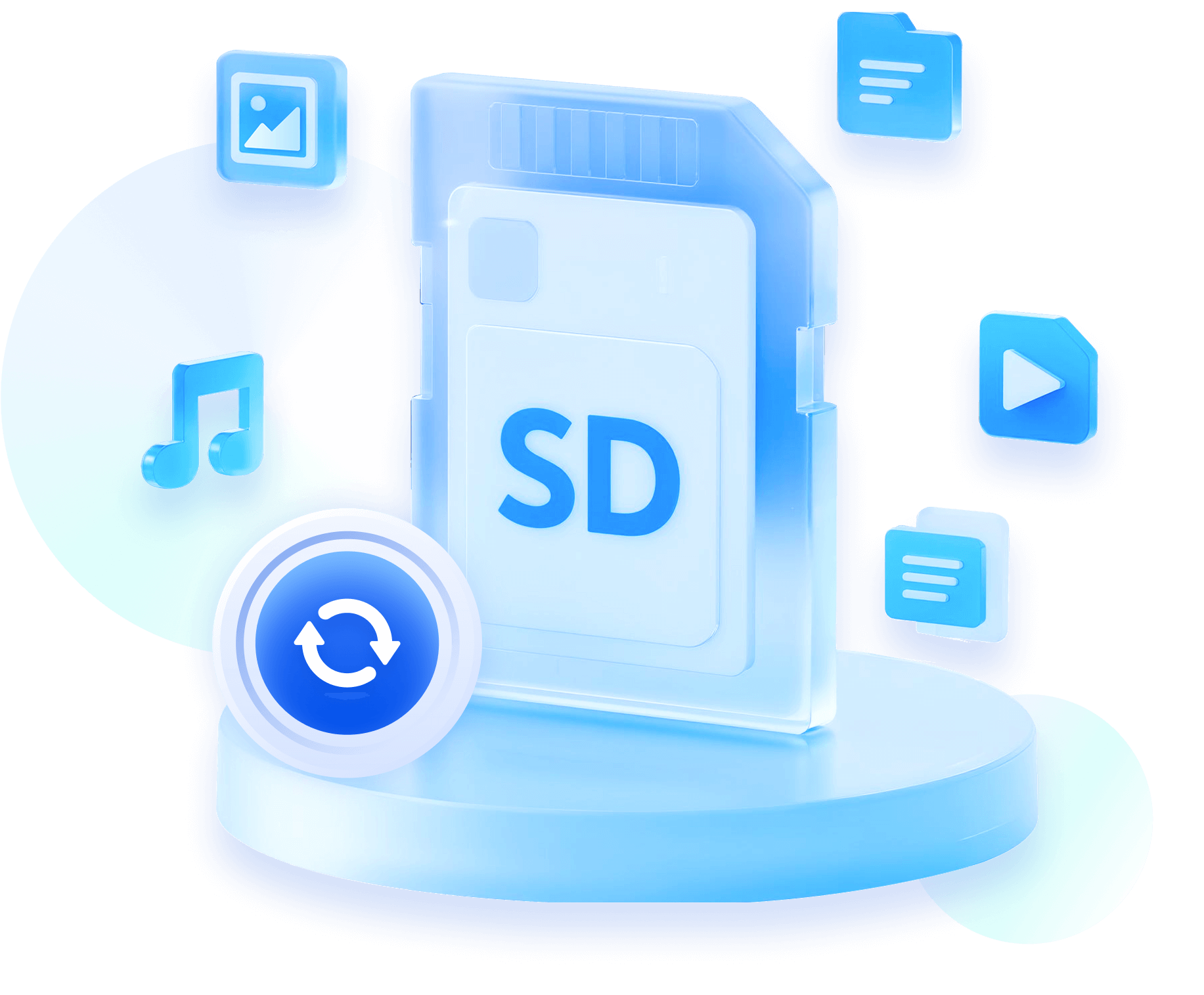Common Causes of SD Card Data Loss
Understanding the causes of data loss helps you take correct preventive measures and recovery methods.

Accidental File Deletion
Accidentally deleting important files or mistakenly performing a ‘delete all’ operation is the most common cause of data loss.

Unexpected Formatting
Mistakenly formatting the SD card, or being forced to format it after the device prompts ‘needs formatting,’ resulting in all data being erased.

SD Card Damage
Physical damage, chip failure, or logical errors cause the SD card to be unrecognizable or unreadable, making data inaccessible.

Unexpected Power Off
A sudden power outage or accidental removal of the SD card during data transfer may cause file corruption or directory structure errors.

Virus Attack
Infection by viruses or malware may lead to files being hidden, encrypted, or deleted, resulting in data loss.

File System Errors
Errors in file systems such as FAT32 and exFAT cause damage to the file directory, making data inaccessible normally.
Drecov Steps for SD Card
With our professional data recovery software, retrieve lost data in just a few simple steps.



Connect the SD card requiring data recovery to your computer. Launch PandaOffice Drecov, select the SD Card Recovery mode, then choose your SD card to start the scan.

After scanning, the software will list all recoverable files. You can filter by file type, path, or time, preview photos and documents, and select the files you need to recover.

Choose a storage location different from the source SD card as the save path, then click the ‘Recover’ button. After recovery is complete, you can find the recovered files in the specified location.

Supported Recovery Types
PandaOffice Drecov supports recovery for various devices and file types to meet your diverse needs.
PandaOffice Drecov supports recovery for various devices and file types to meet your diverse needs.
Supported File Types
Supported Devices
Images
JPG, PNG, RAW…
Videos
MP4, MOV, AVI…
Audios
MP3, WAV, FLAC…
Documents
DOC, PDF, XLS…
Compressed Files
ZIP, RAR, 7Z…
Other Files
More formats supported
Camera SD Cards
DSLR, mirrorless, and more
Phone Memory Cards
Android phones and devices
Camcorder SD Cards
Home and professional camcorders
Game Console Cards
PS, Switch, and other consoles
Tablet Memory Cards
Various tablet devices
Common SD Card Problem Guide
Answers to questions you may encounter when using SD cards and during data recovery
ALL Questions
Formatting
Accidental Deletion
Other Issues
Damage
Don’t format it directly! Close the prompt first, use data recovery software (e.g., PandaOffice DRecov) to scan the SD card, extract and back up the important data. Once backed up, use tools like SD Card Formatter to format and fix card errors—then it’ll work normally.
Shooting HD/4K videos requires a U3-class SD card (write speed ≥30MB/s). If you have a U1-class card, replace it with a high-speed one. If it’s already a high-speed card: ① Format the SD card on your phone to clear redundant files; ② Check if the card is properly inserted and clean the metal contacts; ③ Close background apps that use storage to reduce write pressure.
It’s likely due to hidden files (e.g., system cache, partially deleted large files) or file system errors. Solutions: ① Show hidden files on your computer (Ctrl+Shift+V for Windows, Command+Shift+. for Mac) and delete useless ones; ② Use Windows’ built-in CHKDSK tool or Mac’s Disk Utility to scan and fix SD card errors, freeing up the occupied invalid space.
Recovery is possible! First, clean the SD card’s metal contacts gently with a soft eraser, then try different card readers or devices. If it’s still unrecognized, use data recovery software (e.g., PandaOffice DRecov) in “Deep Scan” mode—even unrecognized cards may have detectable data. For physical damage (e.g., chip oxidation), contact a professional data recovery service.
The issue is the file system—FAT32 doesn’t support files over 4GB. Solution: Right-click the SD card on your computer, select “Format,” and change the file system to exFAT (compatible with Windows and Mac, no single-file size limit). Back up existing data first, then format—you’ll be able to transfer large files afterward.
Your device may prompt formatting if the SD card’s file system is corrupted. You can recover data after formatting by using reliable data recovery software before overwriting the card.
First, recover data with a recovery tool. Then, format the card via your device or computer (choose FAT32 or exFAT based on device compatibility).
Quick format only erases the file table, while full format checks for bad sectors. Full format takes longer but is better for fixing errors.
Yes, it can be reused. To ensure safety, format it again after recovery and check for errors using disk utility tools.
Check for a physical write-protect switch on the card. If there’s no switch, use diskpart on Windows or terminal commands on Mac to remove the protection.
Use data recovery software immediately. Stop using the card to avoid overwriting, then scan and recover the deleted photos.
Yes. Use a mobile data recovery app or connect the card to a computer and use desktop recovery software.
It’s possible as long as the data isn’t overwritten. Use a powerful recovery tool with deep scan mode.
Enable write protection when not using the card, regularly back up files, and use apps with delete confirmation prompts.
Some files may be recoverable, but new data might have overwritten parts of the old data. Use a recovery tool to scan for remaining recoverable files.
Possible reasons include a dirty contact pin, physical damage, outdated device drivers, or incompatible file systems.
It might be a fake card or a corrupted file system. Test with genuine capacity checking tools or reformat (after data recovery).
Try formatting the card, check for background processes, use a different card reader, or replace the card if it’s old and worn.
Yes, but ensure the file system is compatible (FAT32/exFAT). Back up data before switching between devices to avoid corruption.
Check for loose connections, damaged pins, or software conflicts. Try the card on another device or reader to diagnose the issue.
For physical damage, professional data recovery services are needed. For water damage, dry the card thoroughly before attempting recovery.
A cracked card may not work, but data might be recoverable with professional help. Don’t attempt to use it to avoid further damage.
Chemical damage is complex. Consult professional recovery services as DIY methods may worsen the situation.
Gently clean with a soft eraser, then try the card. If it still doesn’t work, use data recovery software or professional services.
If the device’s slot is broken, repair the device or use an external card reader to access the SD card.
User Reviews
See how other users experienced recovering SD card data with our solution.
Ready to Recover Your Data?
Download Drecov now and get back your lost files in just a few clicks









